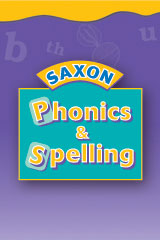고정 헤더 영역
상세 컨텐츠
본문

K 1 23 4 5 6 7 8 9 10 11 12Saxon Phonicswww.saxonpub.comEvidence of Effectiveness:Riviera Elementary:Kelseyville, CaliforniaBeganProgram: 10/96Testing:CTBS, TerraNovaRivieraElementary is a 50% welfare school; all but 4 students were tested.Spring 1998(reading, spelling) TerraNova TerraNovaStatewide Average RivieraElem AverageKindergarten (1 year ofSaxon Phonics) Nottested statewide 80(reading)71 (spelling)1 st grade (2years of Saxon Phonics) 39(reading) 67(reading)38 (spelling) 67 (spelling)2 nd grade (1year of Saxon Phonics) 36(reading) 56(reading)38 (spelling) 50 (spelling)Dr. Griggs Elementary:Poplar Branch, North CarolinaBeganProgram: 9/97 - Second GradeTesting:S.T.A.R.Pre-Test 8/97 Post-Test 6/98Reading G.E.
Saxon Phonics Curriculum

Saxon Phonics Program Kindergarten
1.4 2.4Reading PR 49.0 69.0Reading NCE 49.7 60.4Mayer Elementary School: Mayer,ArizonaBeganProgram: 8.97 - First GradeTesting:Stanford Achievement TestPre-Test 8/97 Post-Test 4/98First Grade ClassAverage 62.2% 77.2%. McKinley Elementary: Parkersburg, West VirginiaSecondGradeTesting:Woodcock JohnsonThesewere second grade students who attended a Remedial Reading Class.Fall 97 Average Spring 98 AverageWord ID 1.45 2.80Word Attack 1.85 5.82Word Comp. 1.47 2.62Passage Comp. 1.60 2.77Total Reading 1.67 3.15ProgramDescription:Saxon = s Primary Phonics series is a success-oriented programthat enables most students in a heterogeneous class to develop a solidfoundation in phonics and thus become successful readers. In keeping with the Saxon philosophy,the phonics series builds on prior learning.New learning is presented in increments, and each increment is reviewedthroughout the year. This providesevery student with the exposure he or she needs to achieve success.Thephonics series is supplemental and may be used with any other readingprogram. Its objective is to providestudents with the information they need to be able to read independently.Theprogram teaches students how to read by introducing them to language in smallincrements.
Students are taught to A code @ words by identifyingthe sound each letter/letter cluster makes, thus enabling them to read, andeventually, to spell, those words. Aseries of spelling rules explaining typical patterns used to spell words isalso taught.
These rules are displayedon wall charts hung around the classroom so that they may be referred toeasily. Words that do not follow thespelling rules are displayed on posters and in booklets students keep at theirdesks.Throughoutthe program, a controlled vocabulary is used, which means that students areonly exposed to words containing those letters, letter clusters, and soundsthat have been taught. This ensuresthat students will experience continued success as they learn to read.Ateacher = s guide provides activities and language appropriatefor students at each grade level. It isscripted (like a play), providing questioning strategies that enable studentsto participate actively in the learning process.
Although it is not necessary to memorize the script, teachers areencouraged to follow the script and the questioning strategies as closely aspossible but in a way that is comfortable.It is important that the various activities provided in the lessons beincluded daily because of the opportunities provided for the different learningmodalities.NOTE: Saxon Publishers, Inc. Has recently releaseda new program – Phonics Intervention (8/99); a remedial program appropriate for4 th grade through adult.This program does not yet have the research available to support itsinclusion on the List of Effective Remedial Programs.Aspects of ReadingThis program addresses the following aspects of reading.




